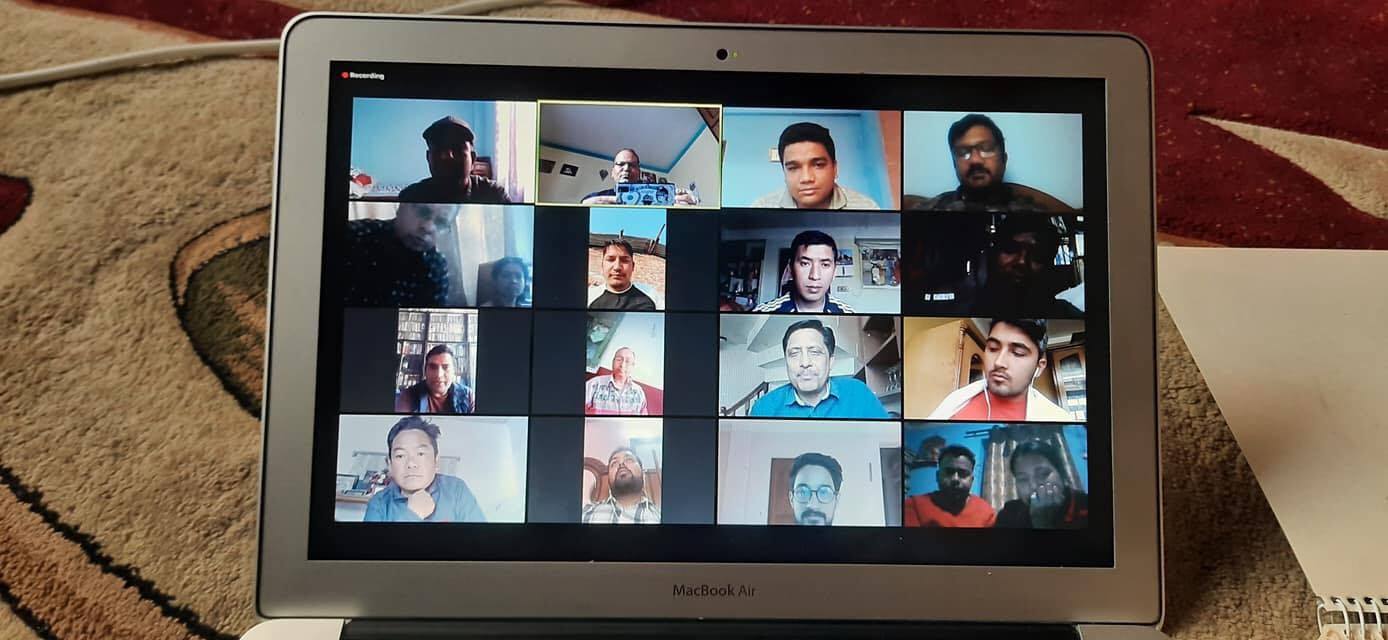The novel coronavirus that emerged in humans in Wuhan, China, in December 2019 has since disseminated globally, significantly disrupting the system the world was functioning. Schools and universities have been closed for over seven months, almost, all everywhere in the world. Millions of children and university students have not been able to attend their educational institutions and are forced to stay indoors for maintaining physical and social isolation.
According to the UNESCO, the global Covid-19 pandemic has caused an unprecedented disruption in education, impacting over 90 per cent of the world’s student population: 1.54 billion children, including 743 million girls. The case of Nepal is also no different from the global scenario; close to 100 per cent of the students in Nepal are affected by the Covid-19 pandemic.
This happened so abruptly that no one was prepared and trained to live in quarantine and isolation at home avoiding all the physical and social connectivity. Historically, ever since the gurukul system, students and teachers have been sharing and generating knowledge in the presence of one another—face to face. However, teaching-learning methods are changing over time from the traditional gurukul system to projectors and PowerPoint slides—from the master model to student-centred approaches. Yet, although technology is available, until now, only a few universities and schools all over the world have started to employ online platforms for facilitating the process of teaching and learning, calling themselves open schools and open universities. The actual methods these open schools and open universities used were not and are not entirely ICT-based, rather it was also a blending with the traditional face-to-face examination system. Now, the novel coronavirus has forced all the education systems to find alternative paths of teaching, learning, and evaluation/assessment.
In order to respond to the challenges, physical (which many people call ‘social’) distancing and lockdown have been considered effective measures until humanity will have developed vaccines to control the virus. Making the vaccines fully successful and available in the market for people all over the world—rich and poor—still seems a distant dream as many scholars in the field suggest that the earliest possibility of successful testing and availability of the vaccine is at least by the end of 2020. This has immensely affected the global education system and Nepal’s education system cannot keep itself in isolation from what is happening in the world.

As a result, institutions across the world, including those in Nepal, are mulling and trying to ‘go online’. However, there are a number of issues needed to be considered to ‘go online’. For example, the national education policy needs to be adopted for doing so, mainly for school education. Universities need to develop their own online policy using their autonomy. The relevant ministry and the government of the day need to support such initiatives as all schools and universities cannot be kept in the black and white boxes rather in a mosaic with different contexts and needs. One of the most crucial points that need to be understood is that in one world, there are multiple worlds. In Nepal also, there is diversity among schools and universities. There are differences within government, community, and private schools and huge differences do exist within and between each of these categories. So is the case of existing universities in Nepal.
In the global mosaic, many of the educational institutions, particularly in developed countries, have been running their classes online effectively. However, students in middle and low-income countries including Nepal, in a large number, are not able to attend virtual classes because of the inaccessibility of hardware and software technologies. Meanwhile, online teaching and evaluation skills of teachers/professors and the home environment of students also might not fit.
Until recently, we anticipated that the virus would disappear soon, but contrary to our hope, there is now the resurgence of the cases as the second wave. Nepal is returning to stricter lockdown, physical and social distancing measures. It seems that these measures will remain in imposition for a long time to control the disease from further spreading.
However, these measures are also going to deprive millions of students of their fundamental right to education unless alternative pathways are sought and implemented. Thus, education institutions and relevant ministries need to focus on how the education system can be made operational in the time of the pandemic. One of the alternative paths can be a full-fledged ICT-based education as the immediate and long-term alternative to combat the Covid-19 and similar pandemics in the future.
In this context, the positive vibe is that many educational institutions have opted for ‘going online’ adopting the buzzword—online classes—and many schools, mainly private schools and Kathmandu University, have already started to offer courses through online platforms. Kathmandu University has been a leading institution in the country to run all the classes and evaluation systems online and students from different schools such as the School of Arts, School of Education, and School of Management have already been able to complete their semesters timely. These initiatives and practices can be the best practices to be adopted by other schools and universities in the country so that students do not have to waste their semesters/years in the name of Covid-19.
In this changed context, novelty needs to be innovated instead of only prioritising the traditional/conventional methods of teaching and learning. Having said these, however, all the schools and universities must (further) consolidate and strengthen existing online systems to fully benefit all the stakeholders and educational processes right from the admission to teaching, learning, evaluation to graduation. To consolidate and strengthen the system, four key factors must be considered: schools’ readiness for conducting ICT classes, teachers/professors’ readiness for conducting ICT classes, students’ equitable readiness for ICT-assisted classes, and home environment readiness for ICT classes. Ensuring these four pillars keeping equity at the centre can help educational systems to resume by going fully online right from the admission to graduation.
Dr Pandey is the Programme Coordinator at the Community Development Programme, School of Arts, Kathmandu University. His areas of expertise are public policy and environmental affairs.


No comments:
Post a Comment